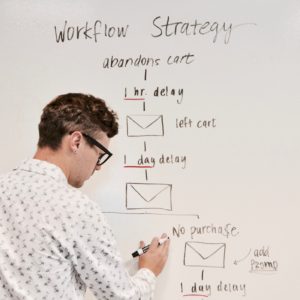Why Project Finance?

Why developers (should) seek to use Project Finance versus Venture Capital or other methods
Impact innovators can now take advantage of quite affordable, low-cost Project Finance, which is a “method of long-term financing of infrastructure and industrial projects based upon the projected cash flows of the project rather than the balance sheets of its sponsors.” Compare this to venture funding?
Similar to how Microfinance (small loans to those who would otherwise not have access) has moved the needle on poverty (more on this earlier revolution here), modern mid-market Project Finance has opened up vast opportunities for impact entrepreneurs globally. In the past, strict banking standards and performance ratios determined eligibility. If you did not have a substantial cash contribution, you would have to find an equity partner before you had any chance of leveraging debt. If you haven’t previously built projects of a similar type and size you would be scrutinized that much more carefully, held to even higher standards.
The unstated rules for traditional project finance have been decidedly undemocratic — basically, unless you already had money (and/or a team that basically “walks on water”), you could not get money. Now, thanks to an innovative structure, there has been a fundamental shift, one that is potentially disruptive of the traditional methods, for those who seek 100% financing, have one or more mid-market projects that are not yet shovel-ready (whatever “shovel-ready” actually means — it is wide open to interpretation), perhaps are less-than-creditworthy, or otherwise not investible.
In3 Capital Partners help make such projects investible and in many cases even bankable. This matters because it enables developers to gain access to capital, at affordable rates, predictably (and without upfront fees), with a proven process that is (as we like to say) “faster, easier and better” than the old method. In3’s Capital Guarantee Program(tm) provides both equity and low-APR debt to illiquid developers, or in case the developer simply wishes to preserve available cash, offers greater leverage, using a guarantee instrument (definition) during construction as a type of completion surety. Guarantee options and facilitation guide.
Why Impact Entrepreneurship Matters in the days of COVID-19 and Climate Change
As clean energy and other “renewables” and sustainable technologies, green buildings, and many others prove commercially viable and reliable (low risk, relatively high reward), they become increasingly popular with project developers and more risk-averse impact investors and asset managers worldwide.
While early stage venture capital remains a key source of fundamental technology innovation, in the current economy, heading toward a more “circular” and sustainable economy, middle-market project finance (more on the difference between “project” and “venture” capital), particularly in deploying clean technologies, continues to deliver these benefits and advantages:
- An engine for sustainable economic development and improved quality of life for populations typically overlooked and ignored by Western-style capitalism.
- Above average returns, reliably, especially in developing/emerging markets.
- A source of positive social impacts at scale, including good jobs with the potential to help lift people out of poverty … enabling self-reliance, communities that are safe and prosperous
- Often a powerful and sustainable way to protect valuable natural resources — projects begin to push back on traditional “take-make-waste” economic development and toxins from petroleum, plastic wastes, pesticides, and other materials that should not come in contact with sensitive ecosystems. Project finance offers a practical, much more predictable/reliable path to the scale that is required to make a meaningful difference by delivering social and/or environmental benefits
- Acceptance of some technology risk, enabling affordable project funding for projects that involve new solutions that have yet to reach commercial proof-of-concept (see CGP Resources).
- A “free and open market” — not reliant upon grants (though they can still be leveraged when available for technical assistance or proving new markets, etc.), market-distorting incentives or manipulative policies — and thus offer a more sustainable path to a cleaner environment and a just society using market economies. Impact entrepreneurs are behind an increasingly important sector of our economy, just as how “climate finance” can be a form of “enlightened capitalism.”
The true cost of capital: Project principals, sponsors and equity owners appreciate access to affordable, non-dilutive capital (loans), preserving owner income streams, secured by project assets and/or guarantees, repaid to lenders from operating cashflows. Some borrowers actually prefer to pay greater than market rates because there is less paperwork involved (think Mafia). But qualified and professional teams can obtain long-term debt at or below market rates (sometimes called “concessionary” loans), which is a common scenario in impact investing, as roughly one third of investors recently said of their expectations for returns — the term “blended” finance refers to financial returns alongside social and/or environmental value. For more on this, see impact investing for sustainability.
Where is project finance most cost effective and why? Key territories include developing economies, frontier and emerging markets worldwide, including parts of Latin America (Chile, Ecuador and Peru), Sub-Saharan Africa, developing Asia (particularly Malaysia, Vietnam, Thailand, etc.), Eastern Europe, and others. See project finance frequently asked questions, or where we work.
Ripe for Innovation: In many developing countries that lack a well-regulated banking system for affordable lending, or the physical assets for telephones or electricity transmission, for example, clean technology projects for “distributed” (local) power generation prove more affordable than building infrastructure. This is so-called “leapfrog” innovation (see references to Stuart Hart’s research, below). In some regions, the answer is both distributed power and building necessary infrastructure, to prepare for further development and growing regional affluence.
Internationally, clean energy, health and sustainability-related project finance is growing and succeeding, one of the few bright spots in the current global economy. It works at the intersection of purpose-driven “impact” investing, positive social change and sustainable business.
Further Reading:
- What’s the difference between venture/corporate finance and “project” finance?
- There’s much more to impact entrepreneurship that creating startups. Business Education article. https://bized.aacsb.edu/articles/2019/november/teaching%20entrepreneurship%20cultivating%20antifragility
- Looking back, Cornell professor Stuart Hart was right, that the economic crisis of 2008-2010 was “good” for sustainability, per his article, “Converging On Green” (see PDF pg 16 of 55 , and its reference to “leapfrog innovation” on pg. 21/55.
- Low Carbon Development and Poverty Alleviation: Options for development cooperation in energy, agriculture and forestry (PDF, DIIS Report 2009:20, August 2009, 104 p.)




